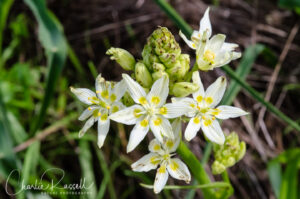
Natalie Coffin Greene Park is a great starting place for a wildflower hike in the Mount Tamalpais Watershed. I believe that this is a municipal park managed by the City of Ross, but I’m not entirely sure of that. It is adjacent to Phoenix Lake, which is managed by the Marin Municipal Water District, which does an amazing job of maintaining trails for public use. There are many miles of trails in this area, with an interesting mixture of riparian forest and grassy hillsides. We did a 4.7 mile loop along the lake shore and up into the hills in late February, looking for early wildflowers.
The Flowers
Here’s a sample of a few of my favorites from this hike (click on the image to see a larger view).
Fetid adder’s tongue is an interesting flower, one of the earlier bloomers in this area. It is easy to miss the small flower itself, but the mottled leaves stand out if you are looking for them. These generally bloom from late January through early March. They are supposed to have a faint putrid smell, but I’ve never noticed it. That attracts their preferred pollinator, a fungus gnat. After the bloom fades the pedicel lowers the seed capsule down to the surface, where ants find it very attractive and carry the seeds off. I have a closeup of the flower in the gallery below.
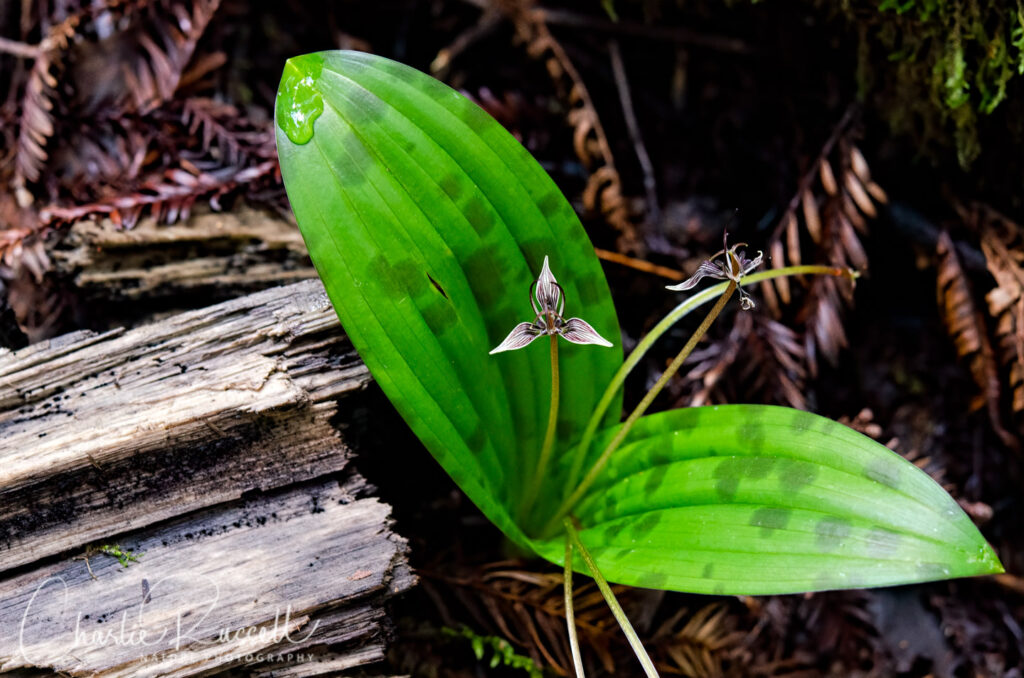
Milk maids are a simple, and common, flower. One of the reasons why I like this is that they are one of the first prolific early bloomers each year. You’ll find them in many locations in Marin and Sonoma. This year, with all the cold weather and rain, it took awhile before we found many of them.

Another great early season bloomer is Checker lily. This is a hard flower to photograph, because it nods down, has a lot of “depth”, and I usually find it in very shady locations.
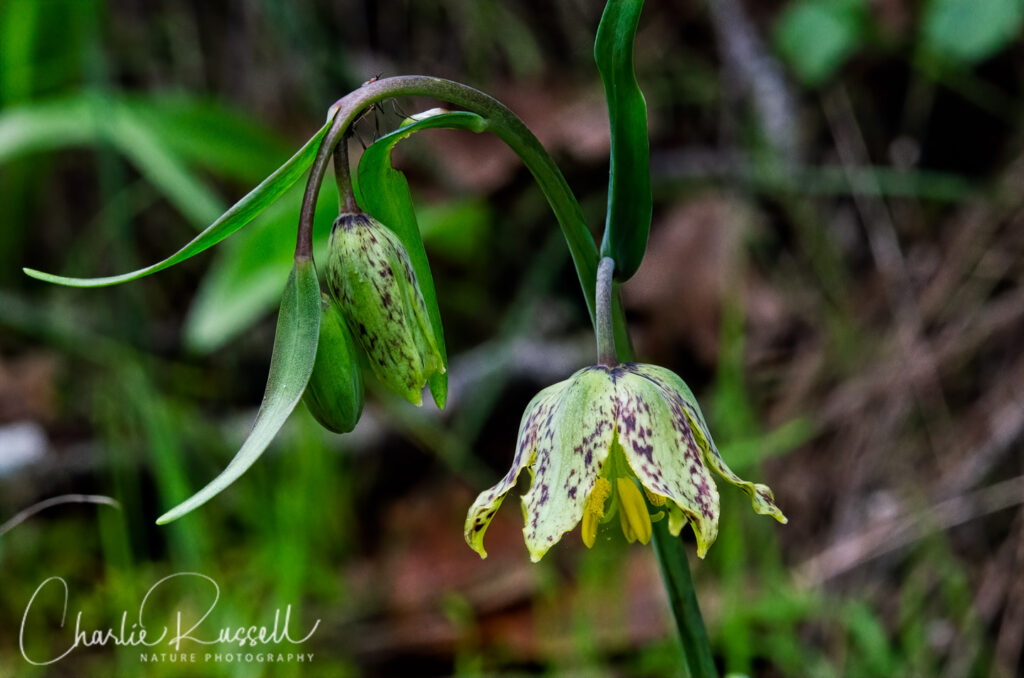
The flowers I’ve shown above were all found in the shadier trail along Phoenix Lake. Our hike also took us up into the hills, where we found a completely different set of flowers. The Mosquito Bill shooting stars were just starting to bloom on the hillsides.
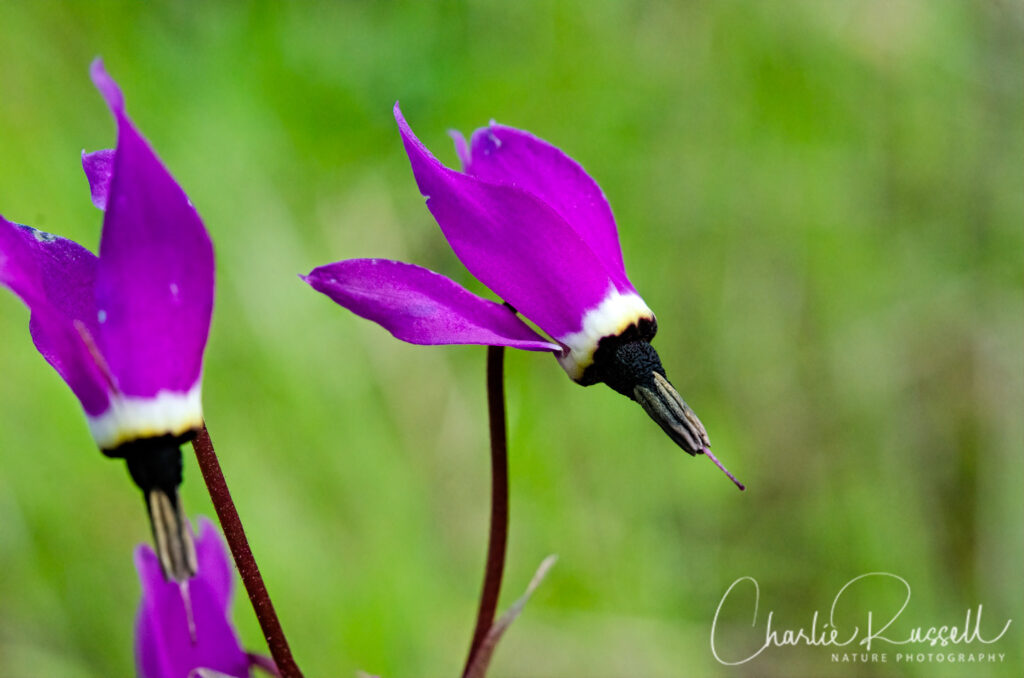
There were many different ferns, lichens, mosses and mushrooms all throughout this hike.
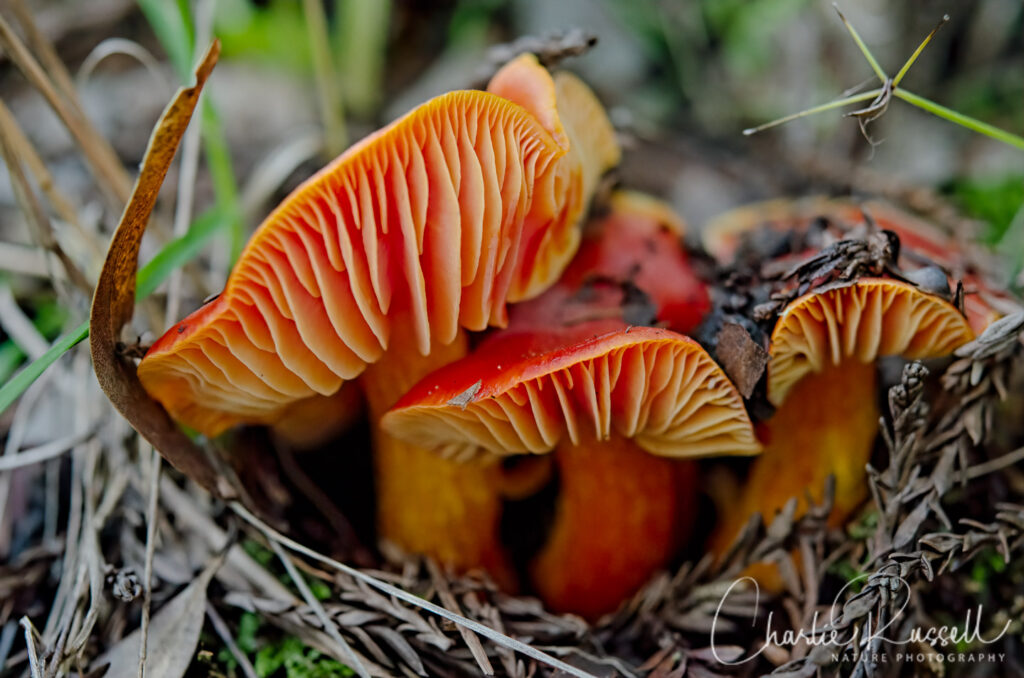
For the best viewing experience, click on the lightbox image below, and you can scroll through larger versions of the photos of many of the plants (and other things) that we found on this hike. All photos are available for purchase in a variety of formats.
The Hike
This was about a 5 mile hike with a fair amount of elevation change along the way.
We started at Natalie Coffin Greene park, near Ross in Marin County. You will hike west on Diblee Road until you get to the dam for Phoenix Lake. Our path took use left (south) along the lake. There were a few wildflowers along this dirt road.
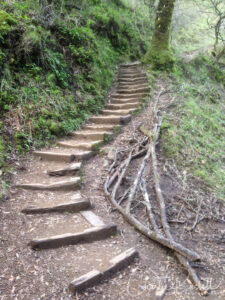
Past the lake you will see a sign for the Gertrude Orr trail, which takes you back along the lake, heading north. It starts with a series of steps, and the trail has multiple elevation changes along the way. This is the shadier side of the lake, where we found multiple patches of Fetid Adders Tongue, Milk Maids, and Checker Lily. There are many different varieties of ferns along the way.
At the west end of the lake the path crosses Phoenix Creek. This can be wet and muddy if there has been a lot of rain. Fortunately, the creek was low enough for us to get by.
From here you head up Shaver Grade Road. It is broad and easy, but you want to keep an eye out for speeding mountain bikes. Lots of room for everyone.
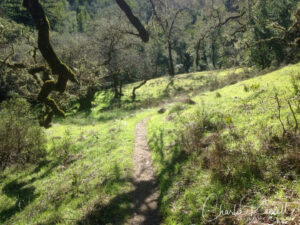
Our hike turned onto the Hidden Meadow trail, which climbs up through the oak-studded hillside. Eventually you come to “Six Points”, a junction of the Hidden Meadow trail, Bald Hill trail, Six Points trail, and Yolanda Trail. We took the rightmost trail option, where the sign points you to Phoenix Lake.
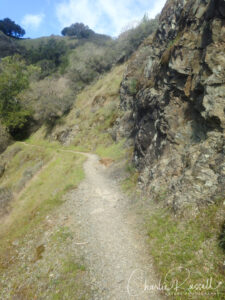
The Yolanda trail wanders across the grassy hillsides, where flowers weren’t as plentiful this time. However, it was worth hiking this way as this is where we found shooting stars and Blue Dicks. There also is a lot of poison oak on the hillsides, so be careful.
Eventually you come to a branch in the trail, we took the left option (Yolanda Cutoff), thinking it would be the quickest way back. This is a steep trail, and not as heavily traveled. We did come across some Mule Deer on this section.
Eventually you return to the roads that will take you back to the parking lot.
Here’s the track that we followed – note that the track says that this was 4.7 miles, but that isn’t taking elevation changes into account. I had some technical difficulties with my phone, so I don’t have all the elevation information there.
Natalie Coffin Greene Park
Profile
Move your mouse along the elevation graph to show the location on the map. The Refresh icon will re-center the map. The Expand icon will expand to full screen.
Directions
Natalie Coffin Greene Park and Phoenix Lake are in Marin County, near Ross. From Highway 101 go west on Sir Francis Drake Boulevard for about 4 miles, and turn left on Lagunitas Road. After about a mile you will come to the parking lot for the park, which is the end of the public road. Note that parking is VERY limited, it could be crowded on weekends. We visited on a Wednesday morning and found plenty of parking.
There are portable toilets at the parking lot, but no drinking water.
Timing is Everything
Even though this has been a wet winter, we found excellent weather in late February. Temperatures were in the upper 50’s at the start, but the area is sheltered from the wind so it was comfortable. Mid to late February is the earliest you will see wildflowers, but it was fun to see all the fresh, green ferns, and if you look closely you could see a wide variety of mushrooms.
Along the lake, on the Gertrude Orr trail, it is shaded and damp, and we found Fetid Adders Tongue, Milk Maids, Trillium, Checker Lily, and Warrior’s Plume. Some patches of Fetid Adders Tongue had already gone to seed, but as we progressed along the trail we found some in full bloom.
Up on the hillsides, along the Hidden Meadow and Yolanda trails, you are more exposed (and warmer). It was too early to see a lot of the grassland flowers, but we did find Hounds Tongue (no pictures, I had some technical difficulties), shooting stars, and Blue Dicks. Later in the season I am sure you will find more flowers here.
Natalie Coffin Greene Park Wildflowers
Here’s a listing of the native plants that we found on this visit.
- Blue dicks, Dipterostemon capitatus subsp. capitatus (formerly Dichelostemma capitatum ssp. capitatum)
- California buttercup, Ranunculus californicus
- Checker lily, Fritillaria affinis
- Crescent-cup Liverwort, Lunularia cruciata
- Dudleya sp.
- Fetid adder’s toungue, Scoliopus bigelovii
- Footsteps of spring, Sanicula arctopoides
- Fremont’s death camas, Toxicoscordion fremontii,illea millefolium
- Hog fennel, Lomatium dasycarpum
- Milk maids, Cardamine californica
- Mosquito bill, Primula hendersonii
- Pacific trillium, Trillium ovatum ssp. ovatum
- Poison oak, Toxicodendron diversilobum
- Warrior’s plume, Pedicularis densiflora
The following are non-native plants that we found on the hike as well:
- Dove’s foot geranium, Geranium molle
- Red stemmed filaree, Erodium cicutarium
We also found a wide variety of ferns, lichens, mosses, and fungi, although I only have photos of a few.
- Earthstar mushroom, Family Geastraceae
- Pixie cup lichen, Cladonia sp.
- Turkey tails, Trametes versicolor
- Waxcaps, Hygrocybe sp.
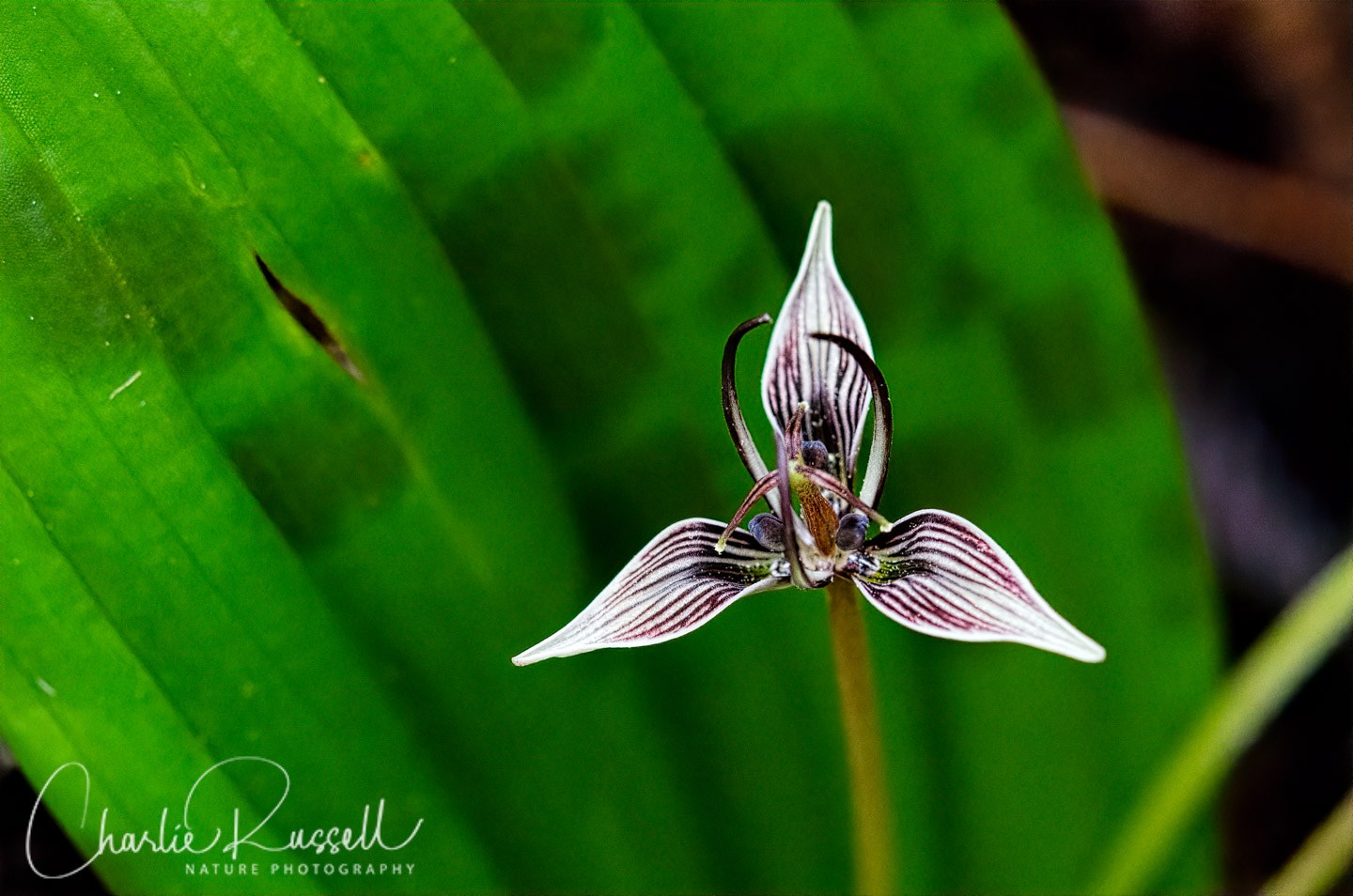
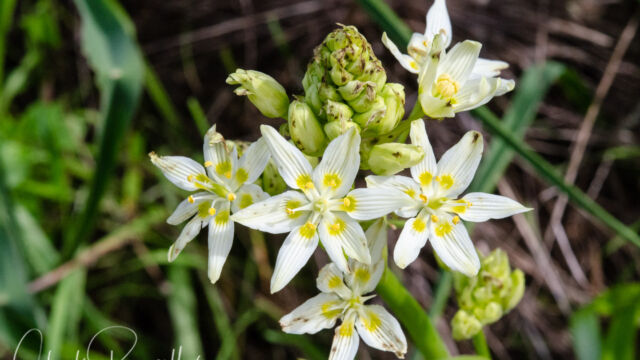

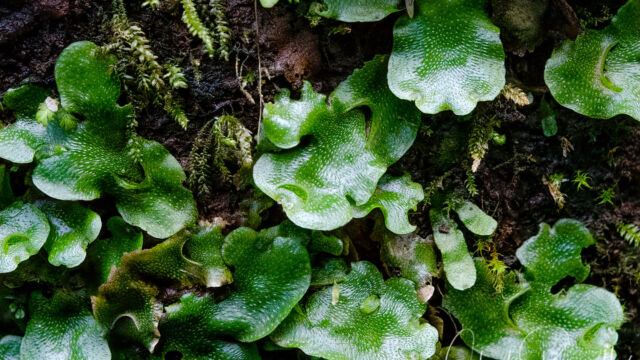

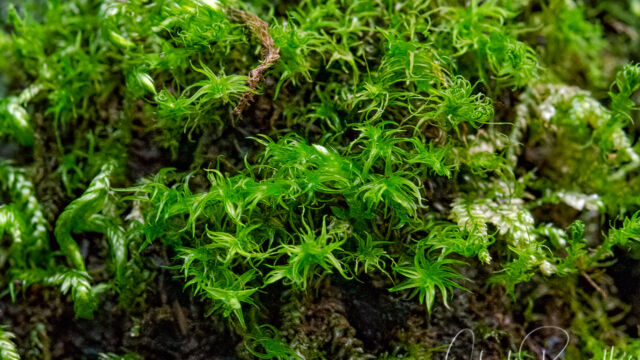

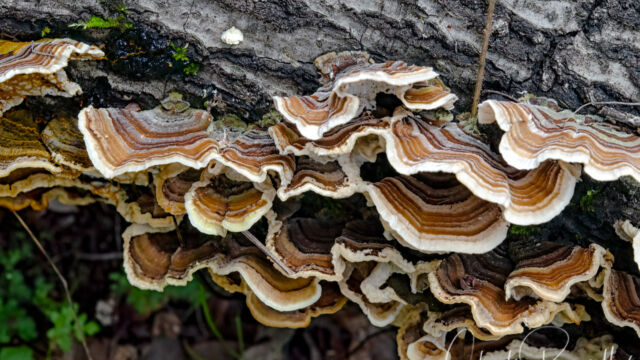
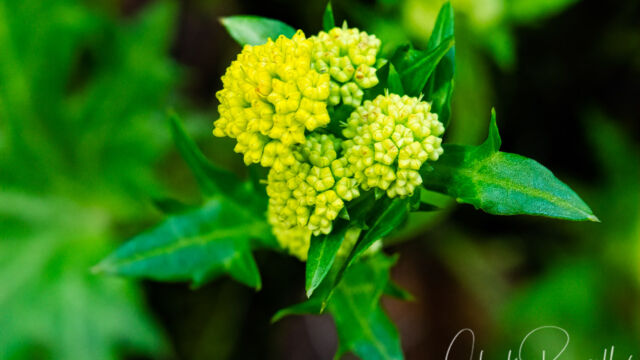
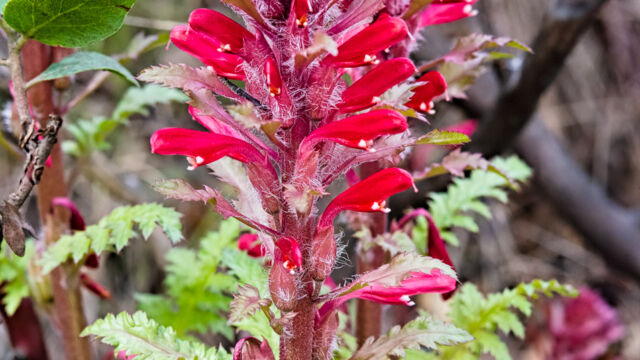
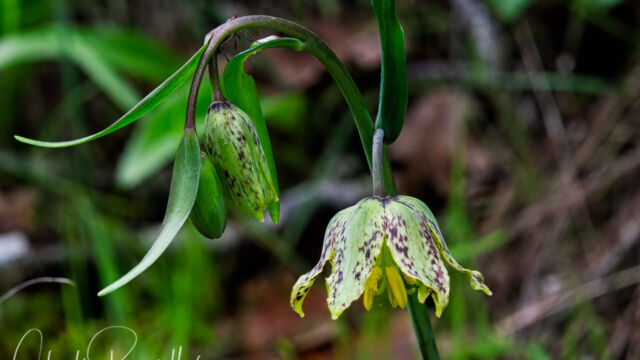

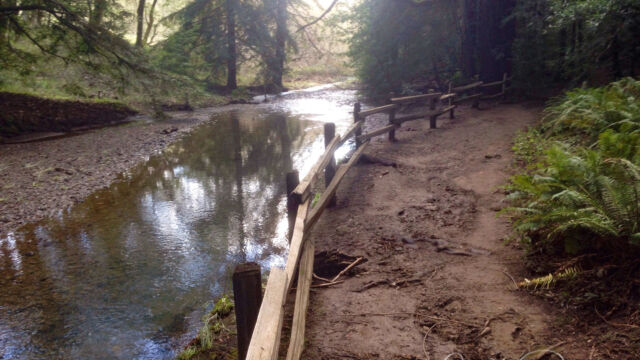
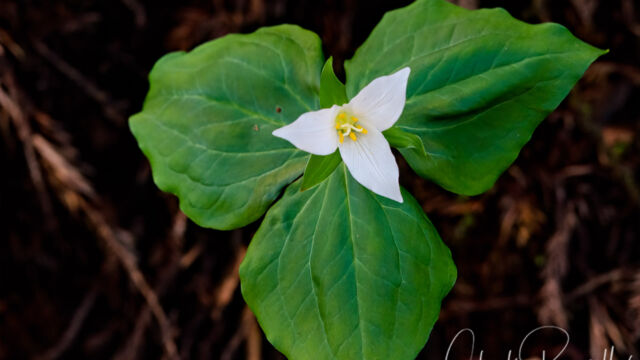
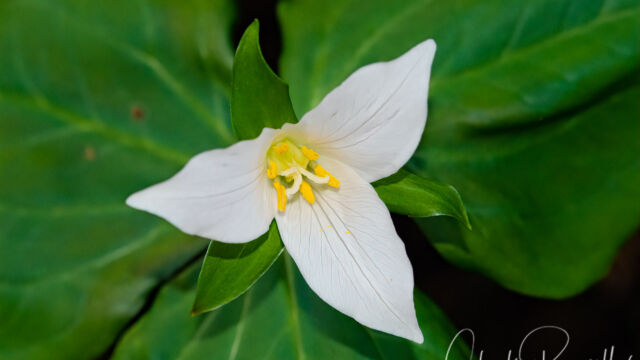
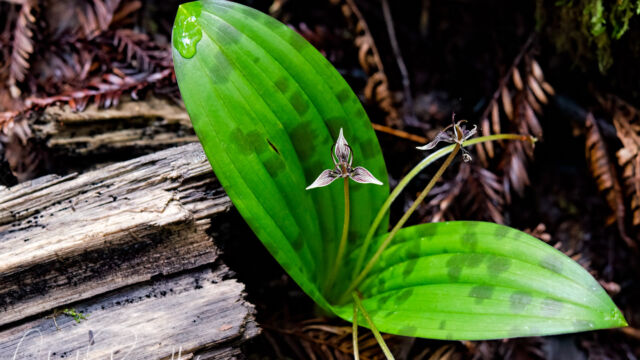

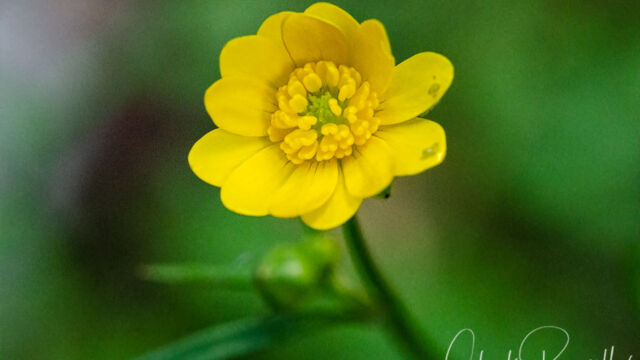

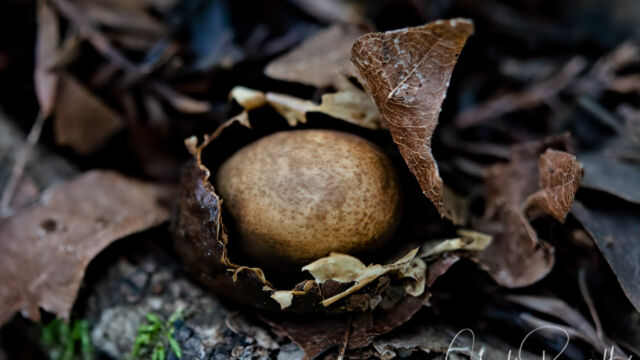
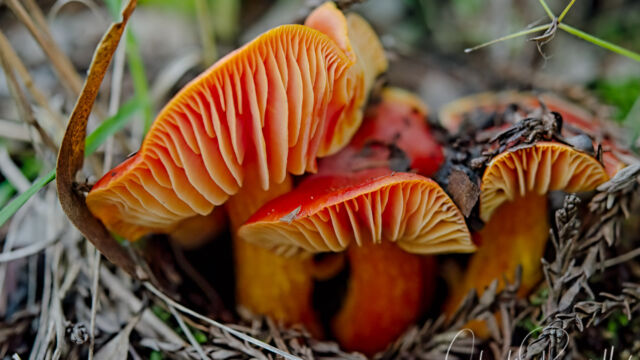
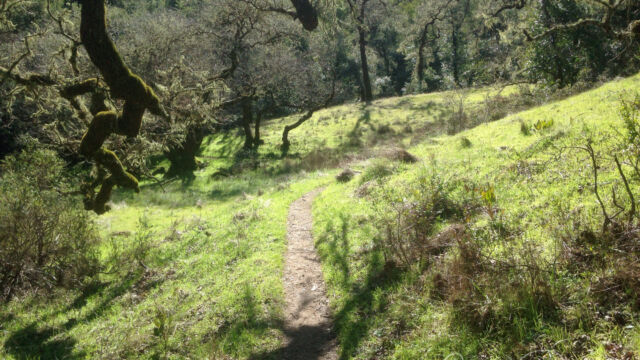
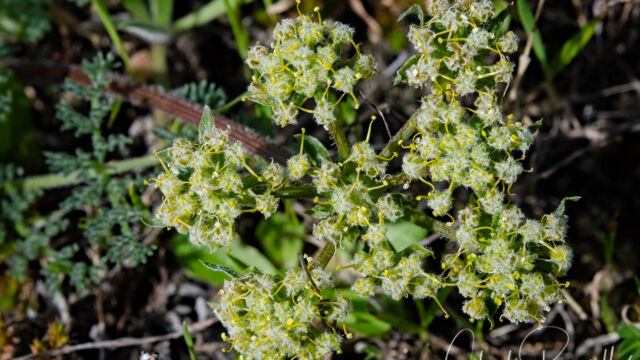
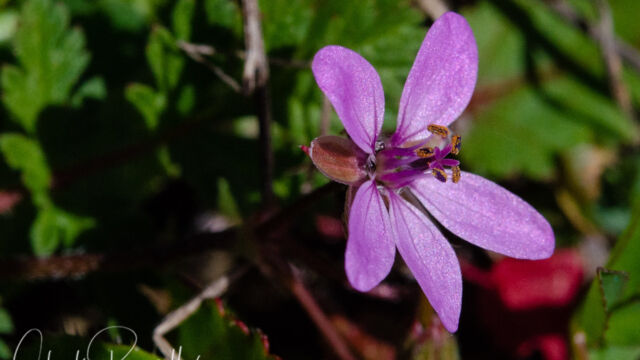
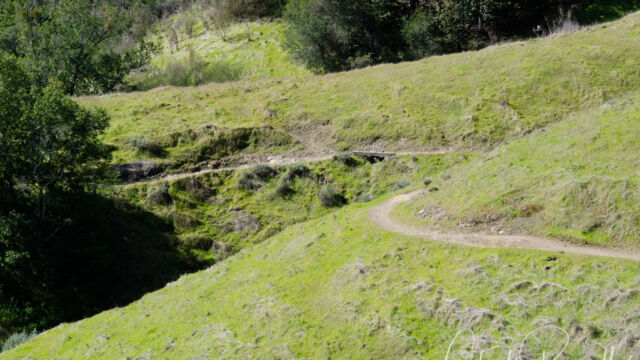

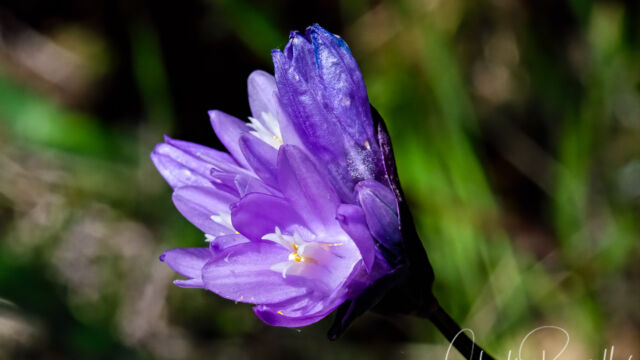
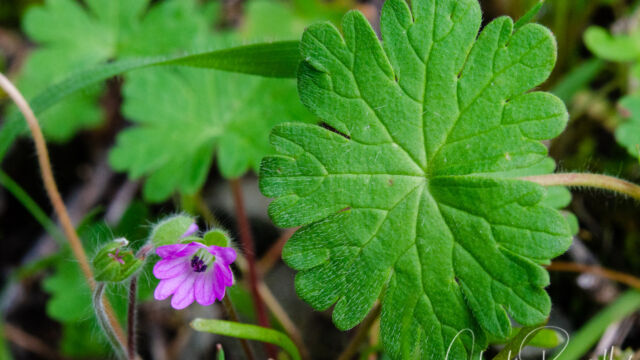

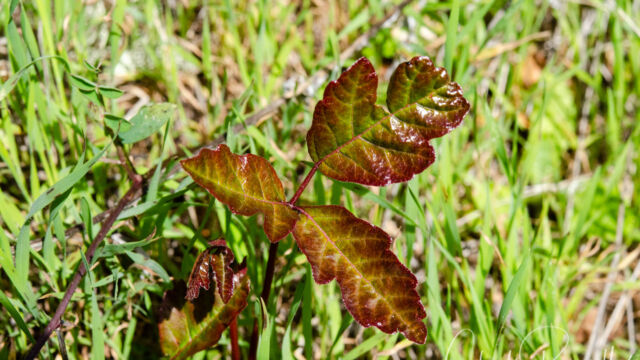
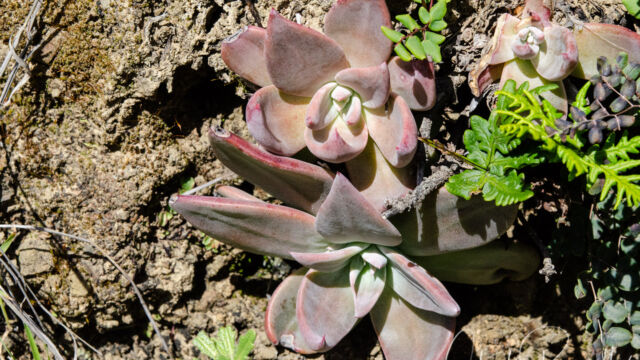
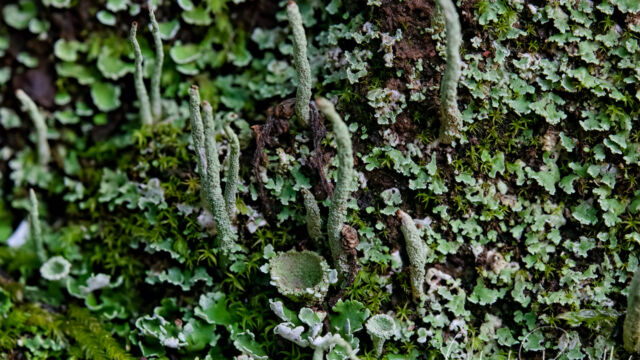

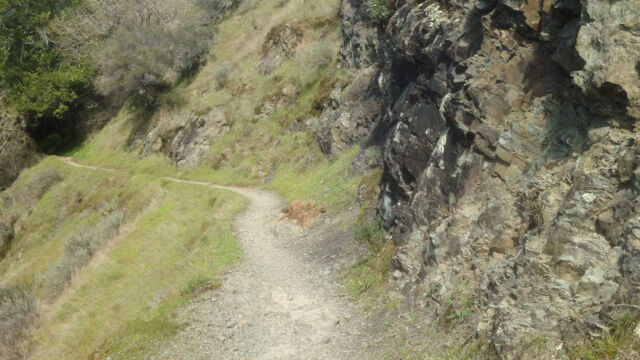
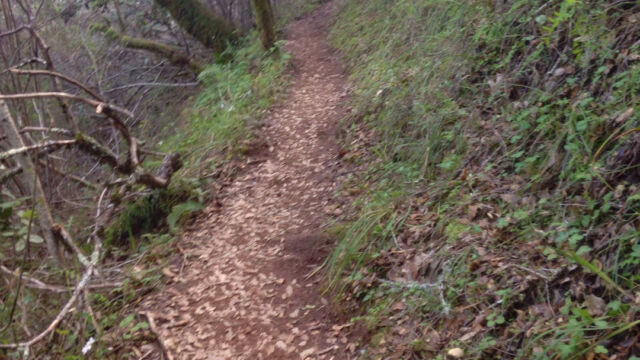

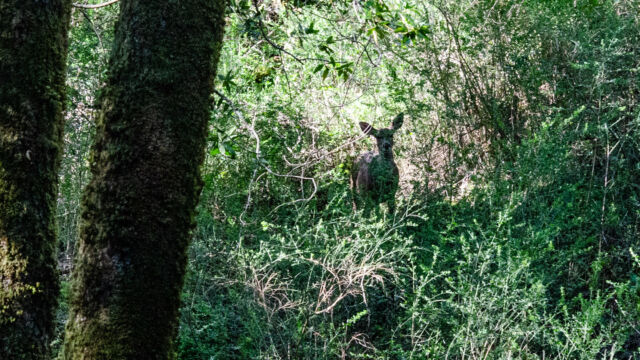

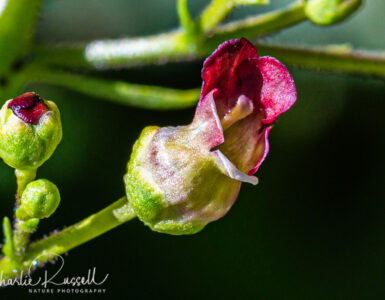
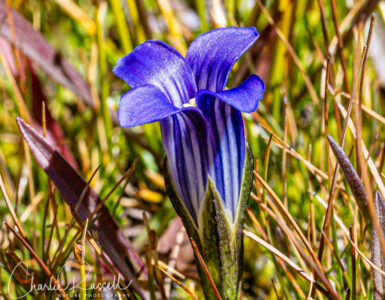
Add comment